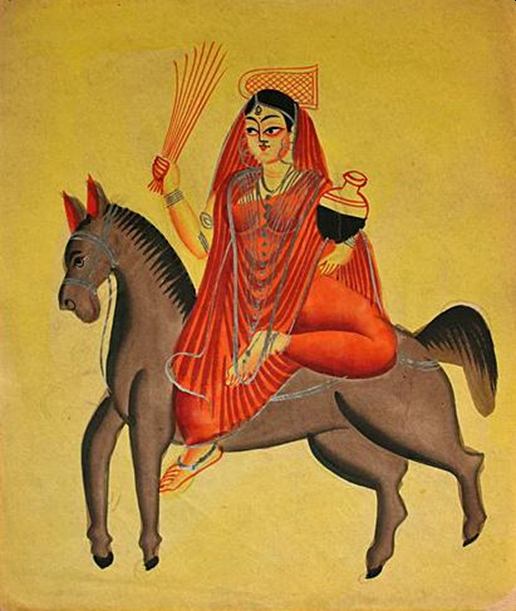We are all worried today about how this pandemic will end, and we will be able to live without fear. Most of us hope that we soon have a vaccine that will help stop the devastation just as it did in the film Contagion that we find so relatable. In this context, it would be interesting to know that the director of the film, Steven Soderberg got the idea of making a film on a pandemic from the TED Talk of 2006 by Dr Larry Brilliant. In his talk, Dr Brilliant used the story of how small pox was eradicated to argue how “to stop the next pandemic”.
Small Pox has been the worst disease in history and also one of the earliest. It is supposed to have been mentioned in medical treatises such as Charaka Samhita in ancient India dating to 1500 BC. It is also supposed to have infected the Egyptian mummy of Ramses V, who died more than 3000 years ago. It is said that it probably evolved from an African rodent thousands of years back and it was brought by Egyptian traders to India, where it remained endemic for the last 2000 years.
Also Read: Pandemics In History 1: ‘Shipping’ The Virus
Also Read: Pandemics In History 2: Rats And The Plague
Also Read: Pandemics In History 3: From Rats To Bats
Small pox had a big impact on world history. It was endemic in Europe by the 16th century and the Crusades of the Christian knights against the Muslim rulers helped spread it across the continent and the mortality was as high as 30%. When the European explorers and settlers arrived in the New World, in the Caribbean and North and South America from the late 15th century, they carried small pox with them. The native Indian population did not have exposure and immunity to small pox and were therefore decimated by it. The mortality was as high as 90% in many cases. This had the biggest role in the Spanish conquest over the Aztecs and the Incas for instance.
In the late 18th century, when Edward Jenner created a vaccine against small pox, in Europe alone, there used to be about 400,000 deaths per year from the disease. Vaccination reduced the fatalities but it continued, and it had a major impact in India. It was an annual visitation in coastal Odisha with high mortality. There were about 310 deaths every mile in Cuttack in 1926, for instance.
Small Pox killed 500 million in the 20th century though the worst epidemic was in 1974, when over 60,000 died in India accounting for 86% of the total fatalities worldwide. Most of the deaths were in the states of Odisha, Bihar and West Bengal. In January 1975, the World Health Organization started an operation called “Target Zero” to eradicate small pox from India and from the world.
Also Read: Pandemics In History 4: A Tale Of Two Countries
Also Read: Pandemics In History 5: India & Pandemics
Also Read: Pandemics In History 6: Pandemonium In Puri
The Indian Government had started a campaign to end small pox in 1962, but vaccinating the entire population was very challenging, not because of the size of the population and the geographic spread but also because of the beliefs of people. Indians believed that small pox was the manifestation of the Sithala goddess, who had taken possession of the patient’s body. Hence, the goddess was placated with cooling foods such as yoghurt and cold rice. Vaccination, therefore, was seen as a violation. People also did not want to report it as it would be wrong to have strangers come, when the goddess was visiting.
The Sithala Mata in Kalighat Painting

In what was to be one of the most massive public health efforts in history, the WHO and the Indian Government with its entire chain of bureaucracy, joined hands to eradicate the disease from India and then from the rest of the world. Because it spread through contact, by touch of the scabs on the skin and through sneezes and coughs like COVID-19, it was important to identify each patient, convince the family and isolate them. Although vaccination existed, it would not be the solution as every year there would be millions of new cases anyway. So, an army of small pox warriors constituting about 100,000 public health workers visited almost every household in the country, about 10 crore houses and isolated them from further infecting others. Meanwhile nurses and paramedics inoculated millions of Indians, starting with the immediate contacts of the infected people, with vaccine.
And due to the heroic efforts, small pox was eradicated from India in just a year and in 1980, the WHO declared small pox to be the first disease eradicated from the face of the earth. What they did then is what we need to do, a massive public health exercise to identify and isolate infected people to stop further infection, and develop a vaccine that can be used then to inoculate people. Maybe the end can begin in India just as it had happened with small pox.
Also Read: Pandemics In History – 7: Pandemics And Persecution
Also Read: Pandemics In History- 8: Disease As Weapon
Also Read: Pandemics In History – 9: How They Influenced History


